Experience Thrilling Adventures in the Wildlands of Tsavo West National Park
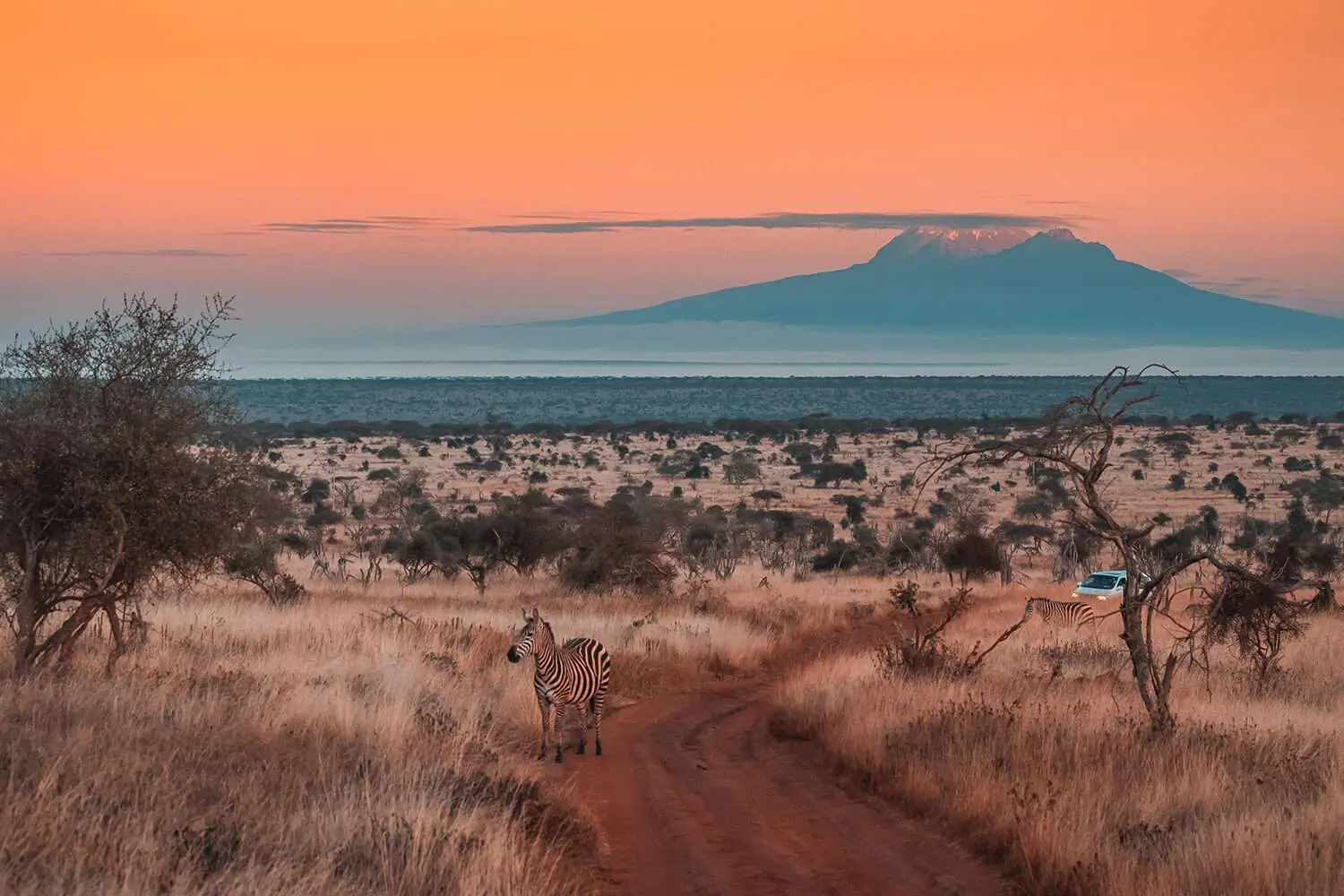
In times past, Tsavo brimmed with overflowing lava, caves that resembled the devil’s abode, and fearless lions. Today, the land is quiet, its landscapes diverse, the scenery mesmerising, and its wildlife prodigious. If you’re thinking about adding this gem to your itinerary, here is what you need to know.
Book Your Safari to Tsavo West National Park With Us
If you’re ready to explore the wonders that await in this enchanting corner of Africa, we invite you to contact us via phone or WhatsApp at +254-704-532-105. You can also connect with us via email at safarioffers@kenyaluxurysafari.co.uk or safarioffers@ajkenyasafaris.com.
Our senior consultant, James Gatheru, will help you personalise your safari itinerary so you can enjoy the beauty the park has to offer.
Tsavo West National Park - Photos by Our Clients
Unveiling the Wonders of Tsavo National Park
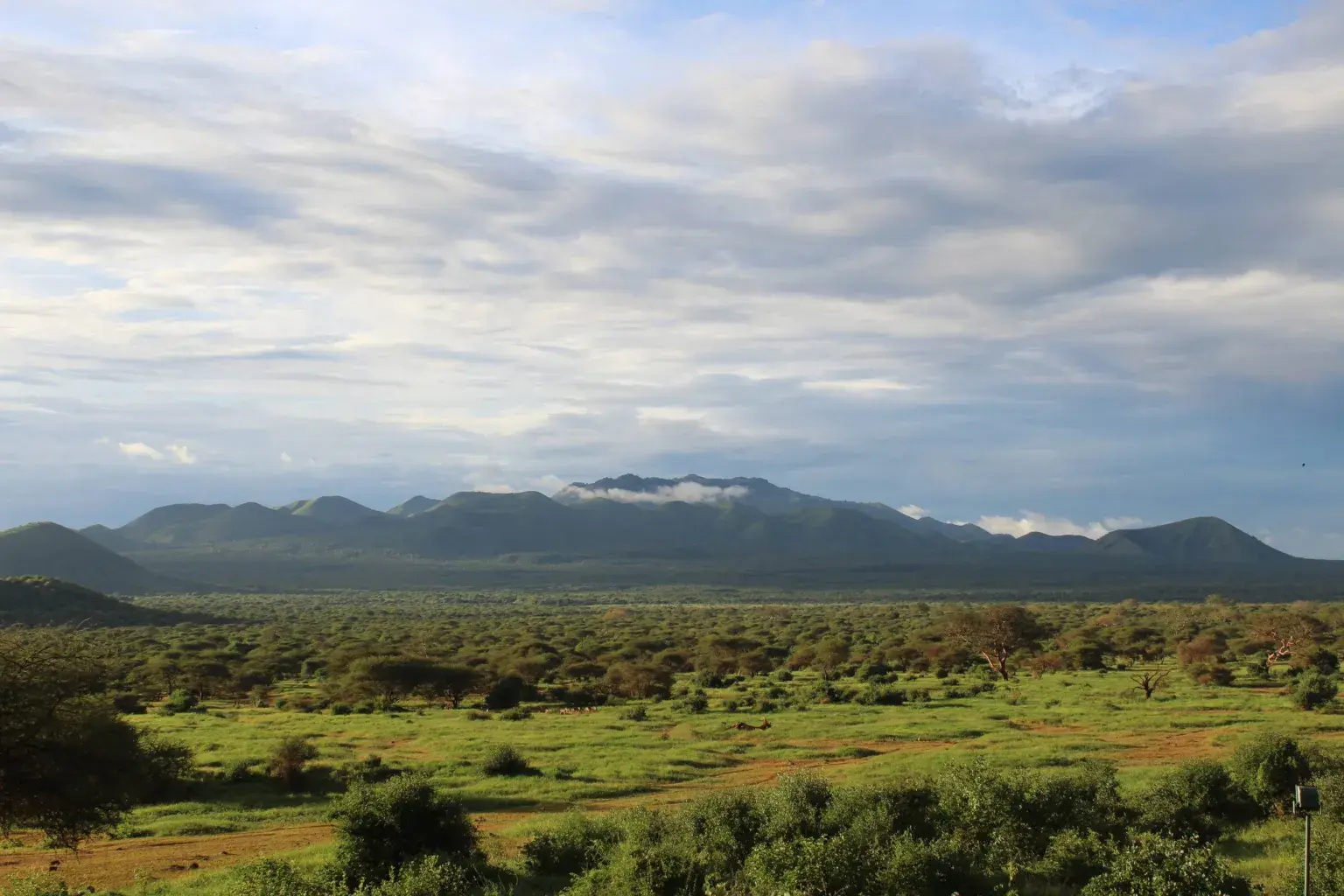
Tsavo West National Park, along with her sister Tsavo East National Park, form Kenya’s biggest park. They were gazetted in 1948 and were once a mega park until they were divided by the Nairobi Mombasa Highway and the railway line that runs alongside it.
Of the two, Tsavo East National Park is the largest national park and interestingly the parks have distinct ecosystems. Tsavo East National Park is a generally flat, harsh and harsh open landscape dotted with humongous Baobab trees, low trees, and bushes. The banks of the Galana River and the Aruba Dam attract many animals and birds that come to quench their thirst.
The Lugard Falls are an attractive feature of the Tsavo East National Park. The falls are essentially a series of rapids that form in the Galana River. Visitors can climb around the rocks or walk around the river to watch these rapids. From Lugard Falls, you’ll enjoy fantastic views of the park including the Yatta plateau.
Other features in Tsavo East National Park include the Mudanda Rock made of stratified rock. It’s an excellent vantage point for observing large herds of elephants and other wildlife that come to drink at a natural dam below the rock.
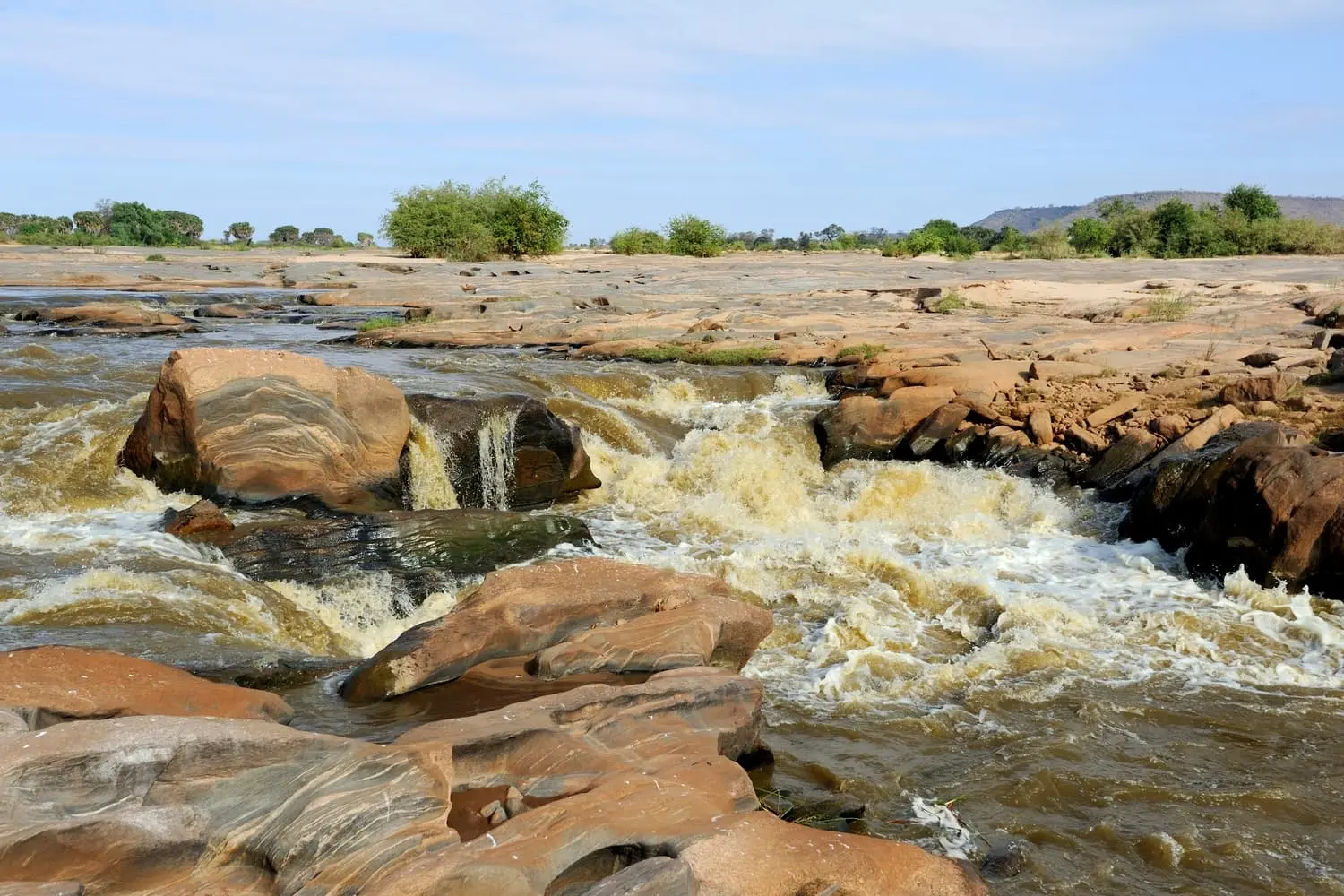
Contrastingly, Tsavo West is a habitat of mountains, riverine forests, rocky outcrops and ridges, palm thickets, dry plains, springs, volcano cones and black lava flows. The Northern part is a picturesque landscape featuring heavily wooded hills. This is where most wildlife viewing tracks and game drives take place. The flatter Southern section is trickier to access because of the dense woodland and thick shrubbery.
Tsavo has some links to the Stone Age era. Small evidence around the Galana River shows that local inhabitants lived in the area around 6,000-1,300 years ago. Tsavo River is a critical water source running from the Western region of the park near the Tanzanian border. It joins the Athi River to form the Galana River close to the centre of the park.
It was around the Tsavo River that two ferocious lions attacked railway line construction workers in 1898. The infamous man-eating lions would enter the camp and drag away sleeping construction workers from their tents. Their killing spree took the lives of over 130 labourers which is quite interesting since the Tsavo means “slaughter land”.
The remaining men fled, effectively bringing the construction of the Kenya-Uganda railway to resume. It took Col JH Patterson hunting and killing them for the work to resume. The remains of these man-eaters can be viewed at the Chicago Field Museum. What a story to add frisson to a lion sighting at the park!
Let’s look at other features of the park.
Landscape and Scenery
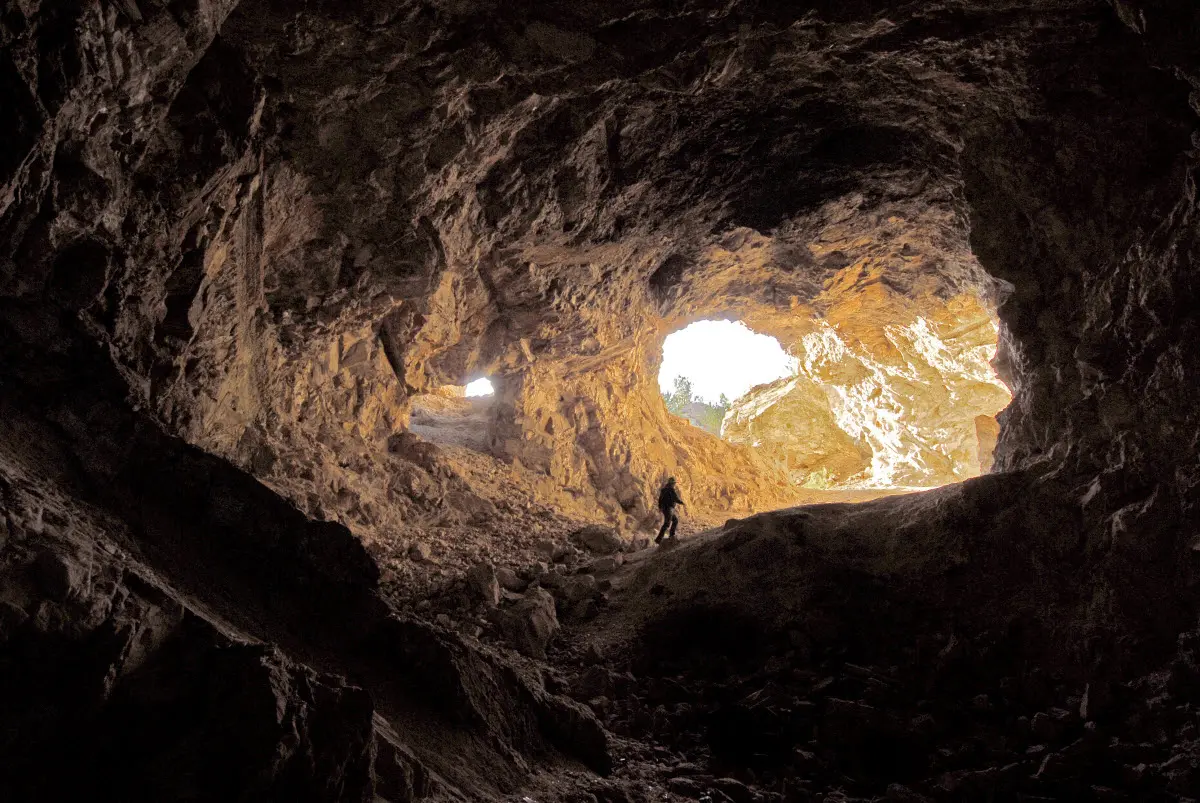
Entering Tsavo West National Park, you are met with the stunning amalgamation of volcanic hills, swamps, and mesmerizing natural springs near the Tsavo River. The park’s picturesque Mzima Springs, Lake Jipe, and the Shetani Lava Flow are just a few examples of the breathtaking scenery that awaits you.
The clear waters of the Mzima springs swarm with fish, huge crocs, and hippos. There’s an underground viewing chamber where you can observe hippos tippy-toeing, crocodiles gliding by, and fish going about their business. Mzima Springs is accessed by a nature trail that contains plenty of warnings about wildlife that may linger nearby, so you’ll need to keep an eye out for that.
The Shetani Lava Flow is a series of below-ground lava caves formed by volcanic eruptions just under 300 years ago. They drive their name from the Swahili term “malevolent ghost” and do have an eerie feel to them. In times past they were used to trap both prey and predator but today’s wildlife have become smarter and avoid the area. It’s a great place to stretch your legs, get a feel of the land and explore the caves’ floors.
Chaimu Crater is a volcanic cone that derives its name from the Kamba word “devil’s crater” (what’s with this place and devil names!). It offers fantastic views of the park and we recommend taking an early morning hike to the top since the track can become brutally hot as the day goes by.
The Poachers Lookout was originally a stakeout point for poachers, thanks to its vast views of the park including Mount Kilimanjaro at a distance. Today, visitors enjoy these breathtaking views over a glass of wine and hors d’oeuvres.
Wildlife Encounters
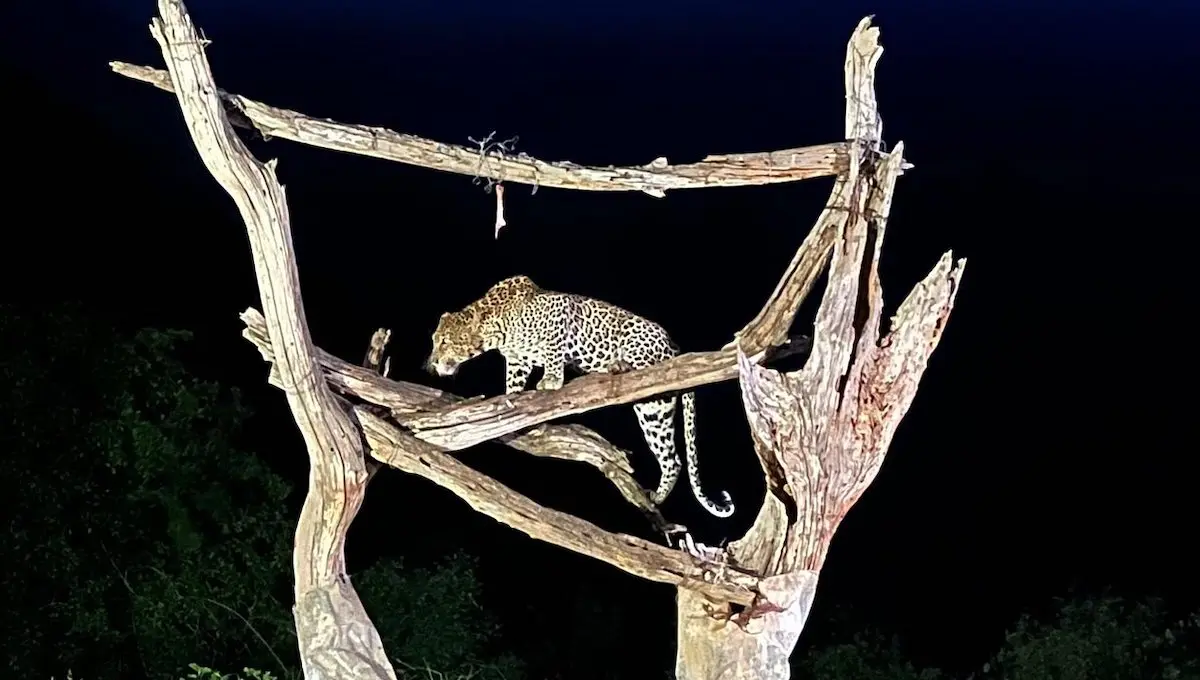
Thanks to the sparse vegetation in Tsavo East National Park, spotting wildlife is easier. Despite the dense woodlands of Tsavo West, several viewing tracks make encounters with many animals possible.
The national park is home to famous mane-less lions, large herds of red elephants, Maasai giraffes, leopards, rhinos, Cape buffalo, lesser kudu, hartebeest, waterbucks, and gerenuk. You’ll also find hippos, crocs, bush babies, hyrax, mongoose, nocturnal porcupines, and several slithery neighbours.
Birdwatching Paradise
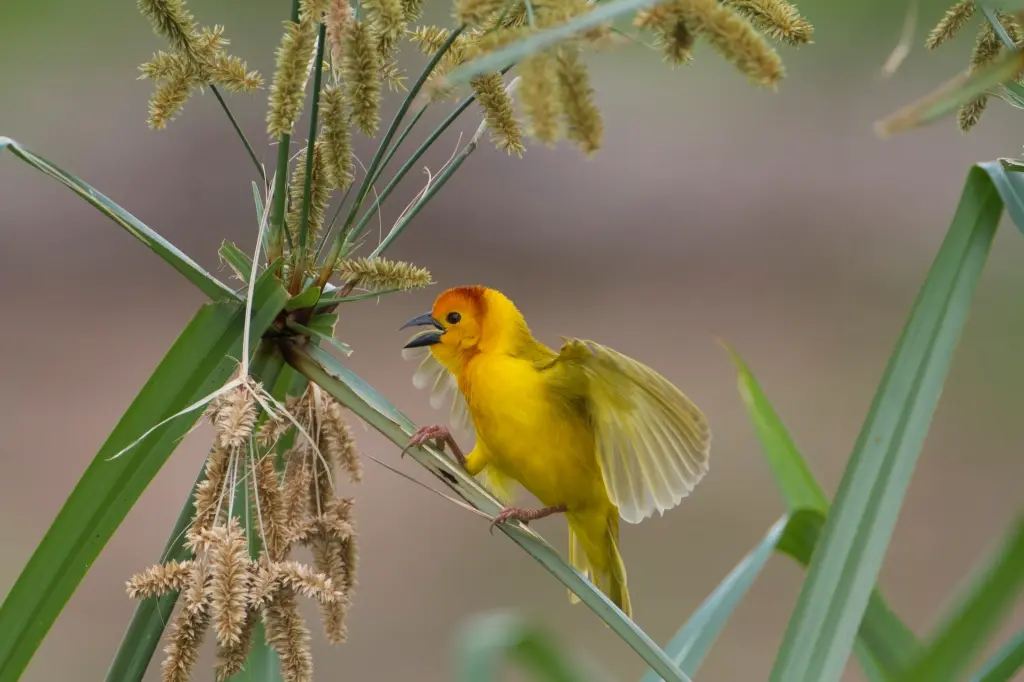
The park is home to more than 600 bird species including the Corncrake and Basra Reed Warbler whose species are facing a decline. The dry season, spanning from July to October provides opportune moments for bird watchers to observe rare resident and migratory birds. Some of these wonderful bird species include
- Speckled Pigeon
- Mourning Collared-Dove
- Red-eyed Dove
- Eastern black-headed oriole
- Golden palm weaver
- Pied Kingfisher
- Verreaux’s eagle owl
- Vulturine guinea fowl
- Purple-crested Turaco
- White-bellied Go-away-bird
- Collared Sand Martin
- Barn Swallows
- European Bee-eater
- Common Swift
Experiencing Tsavo West: Activities and Adventures
The national park offers a wide range of activities and adventures, including game drives, nature walks, cultural immersion experiences, and conservation initiatives.
Game Drives and Guided Walks
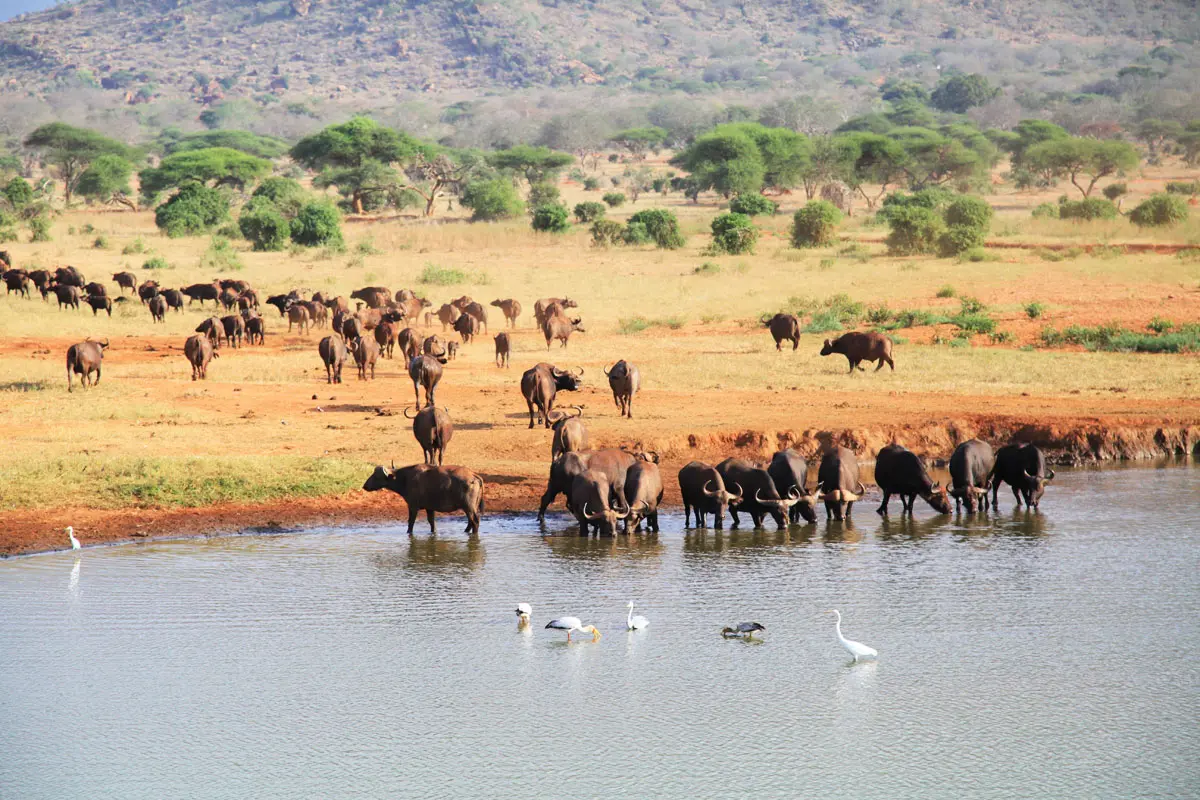
The park offers both day and nighttime drives so you can view diurnal and nocturnal animals. Game drives are typically restricted to the open savannah grasslands and follow existing tracks.
For your safety and to avoid damaging the habitat, going off-track isn’t allowed. The good thing is that the tracks lead to great wildlife-spotting areas. Because of the park’s terrain, game drives are best experienced in landcruisers or open-roof safari vehicles.
Guided walking safaris are done in specific areas of the park—you’re in a wild land full of wild animals after all. The armed park rangers are present to keep you safe from harm. It allows you to explore the park’s wildlife and its picturesque scenery, feel the breeze in your hair and experience the wilderness like the animals do.
Cultural Immersion

For those seeking a more profound connection with the local community, the park also offers cultural tours that provide insight into the customs, traditions, and lifestyles of the Maasai people.
The semi-nomadic Maasai have lived among the wild animals of Tsavo, thanks to their fierce fighting spirit and desire to remain independent. On a cultural tour of their village, you’ll get to see their unique way of life, participate in some of their activities and enjoy their energetic dances.
Close to Lake Jipe, the Akamba people have found a way to co-exist with elephants. The fishing village living close to the lake has granted the elephants safe passage through their village as they make for the lake. You can see the elephants peacefully walking amid groups of children and people running local businesses.
Conservation Efforts
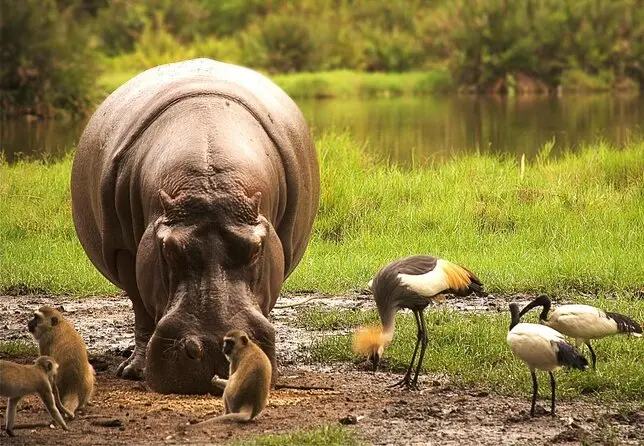
Tsavo National Park is committed to protecting its unique ecosystem and wildlife through various conservation efforts. These initiatives include:
- Community-centred conservation to alleviate human-wildlife conflict and reduce poaching
- Safeguarding wildlife and their habitat
- Encouraging community participation in conservation
- Conducting a census and survey of lions within the park
Back in the 70s, more than 8,000 black rhinos were roaming around Kenya’s biggest park but with rampant poaching, the rhinos were quickly heading toward extinction. By the time the Ngulia black rhino sanctuary was established in 1986, only 20 black rhinos had been left.
Thanks to the rhino conservation efforts and support from Kenya Wildlife Service, their numbers have grown to over 70. You can visit the Ngulia Rhino Sanctuary to see these magnificent creatures.
Where to Stay in Tsavo West National Park
From luxurious lodges offering top-notch amenities and services to comfortable mid-range options and budget-friendly campsites, there’s something for everyone to enjoy during their stay in this remarkable park.
Luxury Lodges
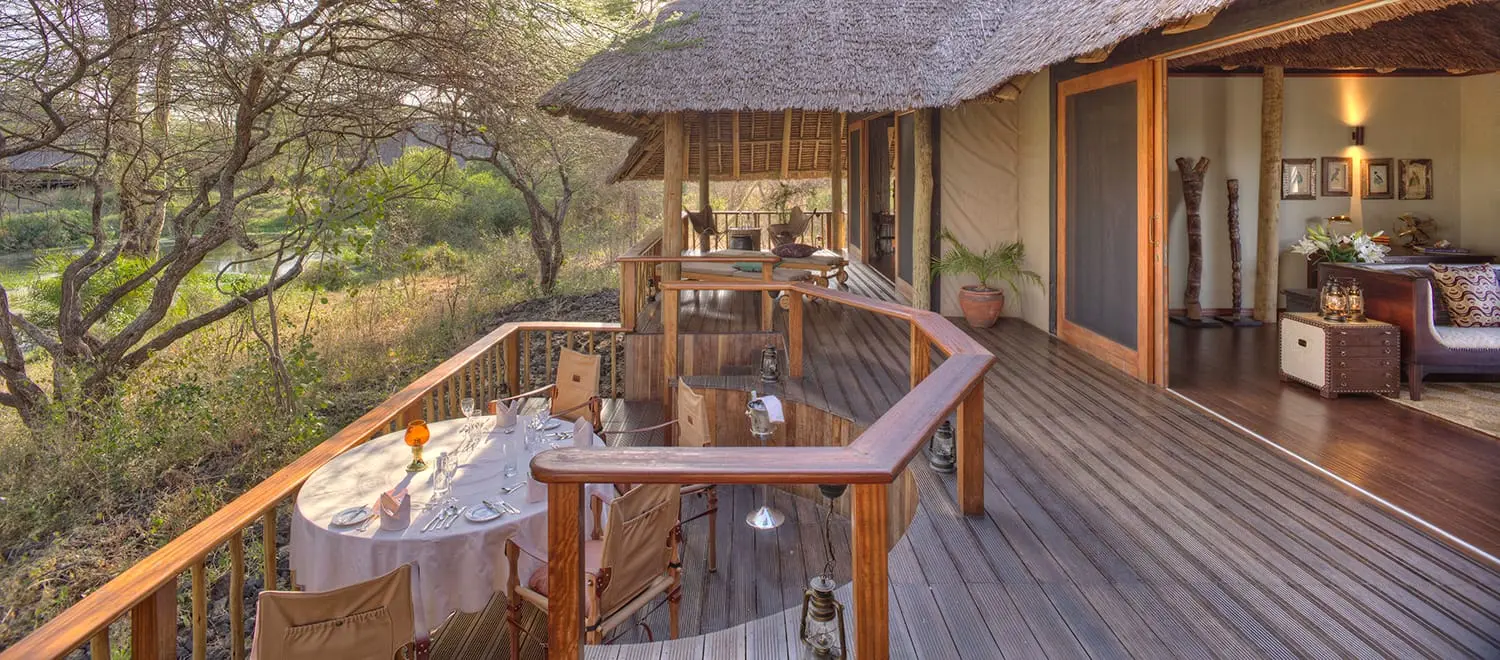
For those seeking the ultimate in comfort and style, Tsavo West’s luxury lodges provide an exceptional experience. Options such as Finch Hattons, Salt Lick Safari Lodge, Severin Safari Camp, and Kilaguni Serena Safari Lodge offer the finest amenities and services. By first class, we’re talking private balconies, swimming pools, spa treatments, and fine dining.
Mid-Range Accommodations

For travellers seeking a more budget-friendly option without compromising on comfort, there are a variety of mid-range accommodations, including:
- Voyager Ziwani Camp
- Ngulia Safari Lodge
- Satao Camp
- Man Eaters Camp
- Ashnil Aruba near Aruba dam
- Severin Safari Lodge
- Voi Safari Lodge
Budget-Friendly Campsites
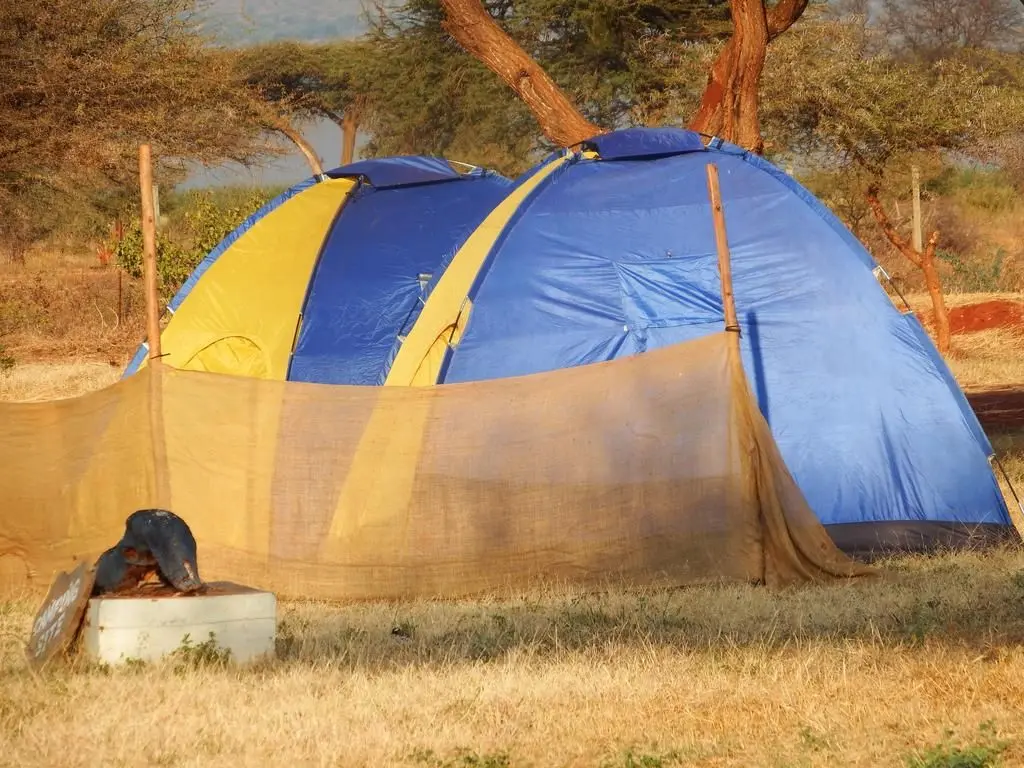
For those working with a tight budget, the park offers several campsites with basic facilities. You get a feel of being out in the wild at these campsites which include Lake Jipe Safari Camp, Kamboyo Campsite, Simba Campsite, Royal Little, and Kenge Campsite.
Planning Your Visit: Best Time and How to Get There

So, how do you get into this beautiful park in Kenya and which months are ideal for a visit?
Getting to Tsavo West
You can access Tsavo by air or road. Several companies such as AirKenya, Mombasa Air Safari, and Safarilink offer flight services to Tsavo airstrips. You can fly in from Wilson Airport in Nairobi or other destinations including the Maasai Mara, Mombasa, Diani Beach or Malindi. Your tour guide should be able to arrange the flight for you.
Road transport is more popular among visitors. There are five main gates namely Mtito Andei (the main gate), Tsavo Gate, Lake Jipe Gate, Maktau North Gate and Maktau South Gate. Mtito Andei and Tsavo gates are popular among visitors arriving from Nairobi.
Lake Jipe is used by tourists flying into the park from Lake Jipe Airstrip. The Maktau gates can be used by those coming in from Mombasa and if you’re connecting to Tsavo West from Amboseli National Park, you can use the Chyulu gate.
Tsavo East National Park has four access gates namely Sala Gate, Buchuma Gate, Voi Gate, and Manyani Gate.
Ideal Time to Visit
The optimal time to explore Tsavo National Park is the dry season, occurring from June to October and again from December to March. These months offer the most favourable conditions for wildlife viewing, as the animals are more likely to gather around water sources, making them easier to spot.
The park receives minimal rainfall which means that travelling during the wet season is still a good option since the roads aren’t that bad. Especially if you’re using a 4×4.
Combining Tsavo West with Other Kenyan Destinations
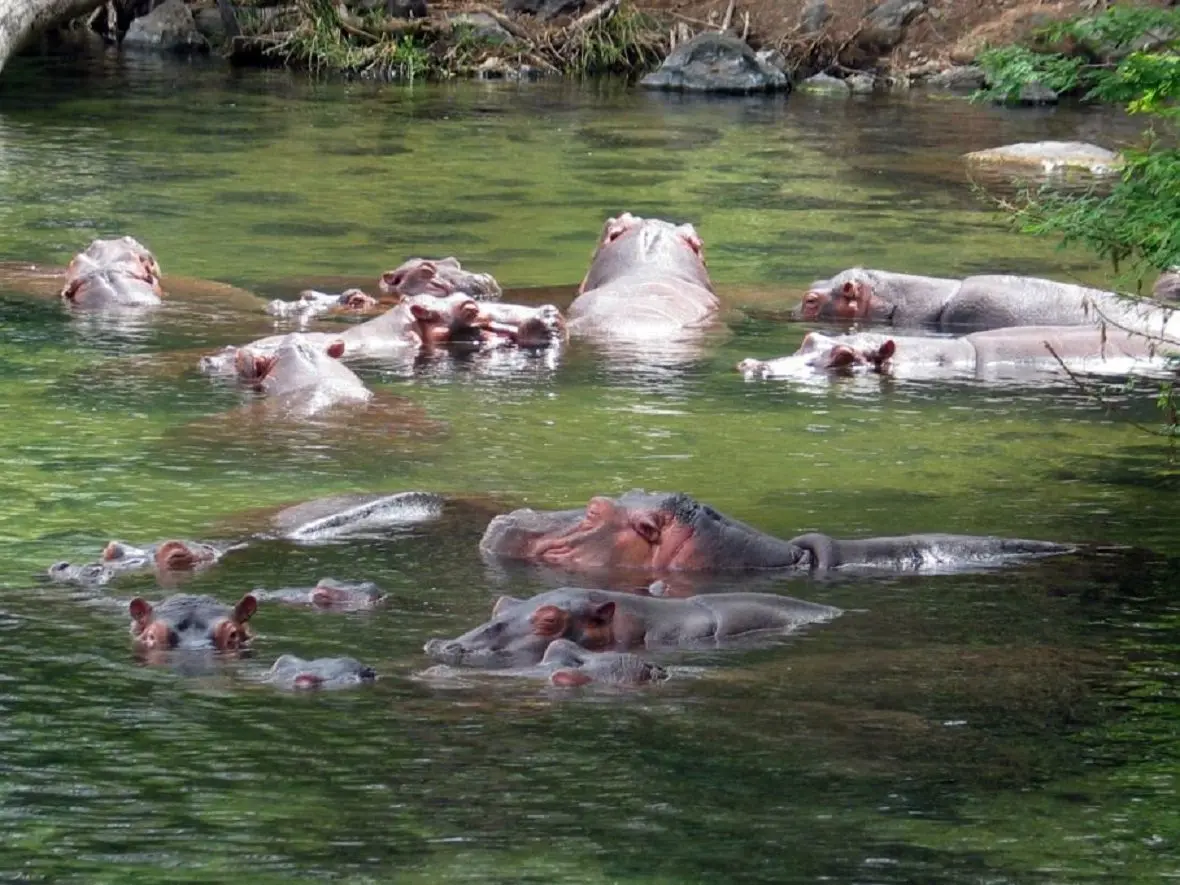
For a comprehensive Kenyan adventure, consider pairing your visit to Tsavo West with other renowned destinations.
Combining Tsavo West with Tsavo East National Park
Experience the best of both worlds by visiting both Tsavo East and West National Parks, each offering unique landscapes and wildlife encounters. The two parks are intrinsically different and you’ll have a wholesome experience of the entire Tsavo National Park. While Tsavo East National Park is far more rugged, its scenery is remarkable and it has more wildlife increasing wildlife-viewing opportunities.
Coastal Getaways
After an exhilarating tour of Tsavo National Park, why not unwind with a relaxing beach holiday at one of the Kenyan coastal resorts? Destinations like Diani Beach, Tiwi Beach, Shanzu Beach and Watamu offer the perfect combination of sun, sand, and sea.
Whether you’re lounging by the beach or enjoying an easy swim, you can go scuba diving, enjoy dhow cruises and other water sports. Kenya’s coral reefs are spectacular and present the perfect spot to explore the underwater world.
Other National Parks and Reserves
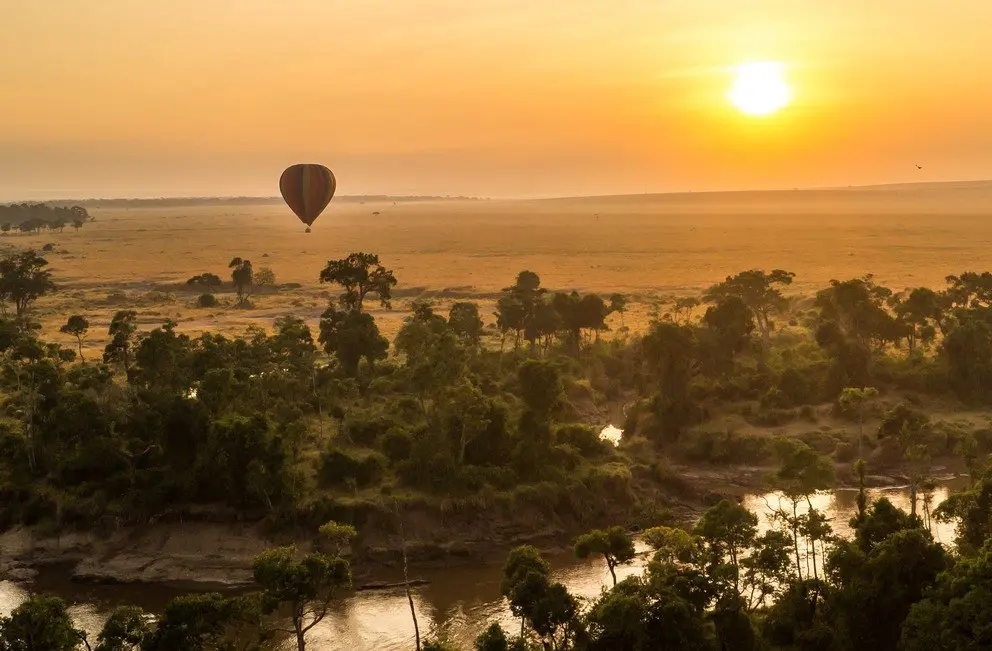
In addition to Kenya’s biggest park, our country is home to several other national parks and reserves, each offering unique wildlife experiences and stunning landscapes. Consider exploring the Amboseli National Park, with its vast elephant herds and panoramic views of Mt Kilimanjaro, or the Maasai Mara National Park, renowned for its wildebeest migration spectacle. Not to mention a large population of lions and cheetahs.
Lake Nakuru National Park in the Great Rift Valley offers breathtaking landscapes and boasts a large flamingo population that covers the shallow soda lake. If you want to enjoy hiking experiences then consider Mt Aberdare National Park or Mt Kenya National Park. Better yet, lose yourself in the remote wilderness that is Samburu Game Reserve.
Summary
Tsavo West National Park offers a truly unforgettable experience, with its diverse landscapes, unique wildlife encounters, rich cultural heritage, and variety of activities and adventures to suit all interests.
Whether you’re exploring the park’s stunning scenery, engaging with local Maasai communities, or participating in conservation efforts, your time spent in Tsavo National Park will leave you with memories that will last a lifetime. Embark on your adventure today and experience the wonders of this enchanting corner of the world.
Frequently Asked Questions
Is Tsavo West Worth Visiting?
Tsavo West National Park offers some of the most spectacular wildlife viewing in the world with its elephants, rhinos, hippos, lions, cheetahs, and buffaloes. Game drives are available multiple times a day including in the night so you can catch some more wildlife action. The park also has multiple interesting landmarks that you can explore so we recommend staying several days to enjoy it in full.
Which is Better Tsavo East or West?
Overall, Tsavo East National Park is preferable for visitors who want to observe wildlife easily thanks to its flatter terrain. The West is lush, wilder, and perfect for those looking for a real animal-spotting adventure. The West also has more landmarks to discover as opposed to Tsavo East.
What is Tsavo West Known For?
Tsavo West has been immortalized by the famous movie, the Ghost and the Darkness. It offers spectacular scenery, diverse wildlife and numerous attractions including the Shetani caves (and many others) volcanic craters, and roaring rocks. Here, you can spot elephants, rhinos, hippos, lions, cheetahs, leopards, Buffalos, and various bird species.
